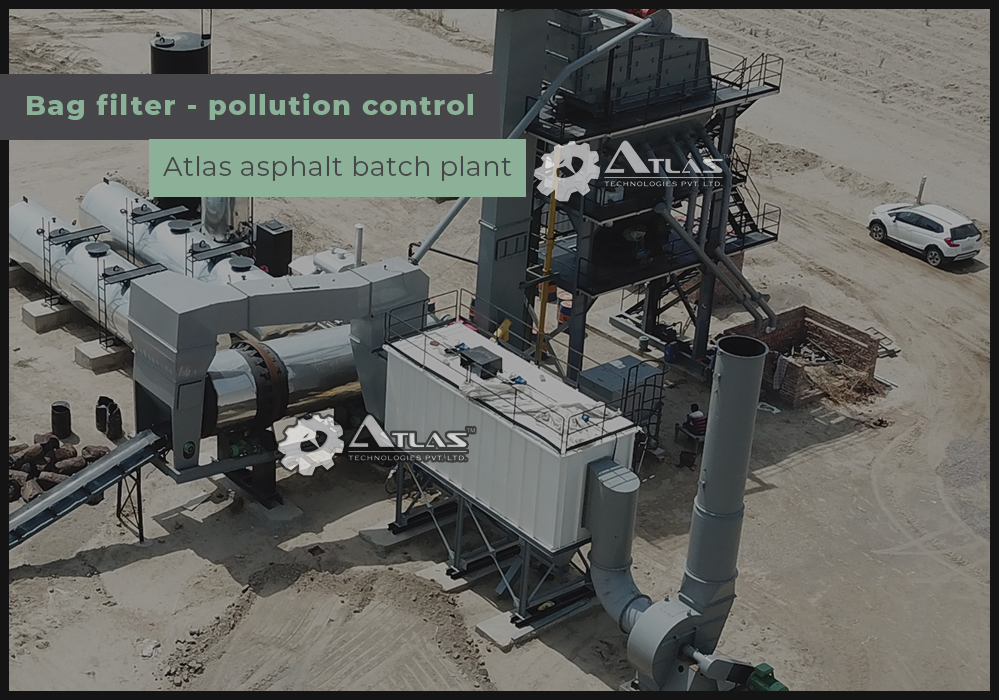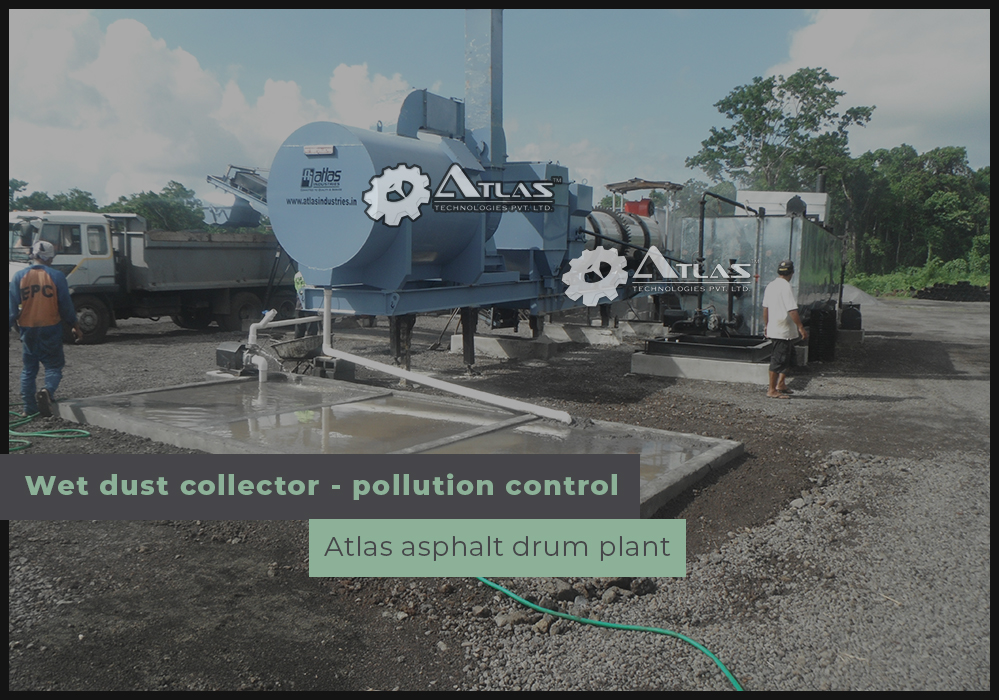Ever since a dust filter has been made a part of asphalt plants, it has become one of the jobs of an operator to know the standards of maintenance and its controls. On top of that, an operator is also required to be fully familiar with the correlation between the performance of the dust collector and the properties of the asphalt mix and how one influences the other.

One of the biggest pollution concerns of asphalt plants comes from the dryer burner. Small things like a clogged burner, or even just an unclean burner or improper air to fuel ratio can lead to too much smoking inside the chambers. It can even lead to combustion by certain materials. That’s why it’s crucial to maintain cleanliness and precise adjustment of the burners and all other accessories involved.
Another factor that can contribute to the pollution of air is dust present in the aggregates. However, there is a straightforward solution to this. Dust is inevitable in aggregates. What can keep it in check is anti-pollution devices. The type of dust collectors that you will commonly find in asphalt batch plants are the multi-cyclone ones that are effective in catching dry dust emitting from the aggregates. Then there are venture type dust collectors for wet dust as well as bag houses. A drum mixer and a batch mixer asphalt plant machine can use more than two such pollution control devices in a row.
However, the pollution control is not the only thing that needs your attention. The duct line too needs care and maintenance, not to mention regular cleaning. Clogging of this line can compromise the cleanliness of the whole process resulting in air pollution all the way, irrespective of the number of dust collectors in place. That’s why monthly inspection of the duct lines is a necessary step. However, if you find more dust than normal in the lines, feel free to conduct more frequent inspections to ensure better results.

Basic Working Of Pollution Control Devices Of Asphalt Plant
All primary dust collectors work on the basis of one core principle, the centrifugal separation. The dust from the dryer drum is drawn into the dust collection through the duct line. As the dusty air enters the collector, the larger particles get separated by the spiraling action of the collector which makes the dust particles hit the sides and fall below. With continuous cyclonic effect the larger particles are easily removed from the air. The screw conveyor does this and send them back to be reused or removed.
Dry dust collectors do not work alone. They are normally installed along with a venture type collector or what is called a bag house filter. If there is more than normal amount of dust, operators need to perform a monthly cleaning of the dry dust collector to keep it fully functional.
Coming to the wet dust collector, its function is to catch the dust particles present in the moisture droplets and extract them out. These collectors work in conjunction with cyclone separators. The collector causes the water to flow in a direction opposite to the dust and that enables the collection to easily draw out the large dirt particles which are then treated with the same cyclonic effect before they find a way to form a sludge. The water goes straight into the sludge pool which is cleaned periodically.
It is important that the wet dust collector too is inspected and maintained from time to time so that the flow of water happens freely. Along with that the water spray nozzles too need to be cleaned to prevent any kind of clogging.
The most effective way to contain the amount of dust released by the aggregates is of course the bag house filters. These devices work in the same way as the common house vacuum cleaners. They create vacuum while drawing out dusty air in the bags. Bag house filters comprise of multiple fabric bags all of which heat resistant. These bags are where fines are collected. With multiple bags, a big amount of gas can be processed at the same time. While the bags draw the air, the filter bags catch the particles. Again, the filter bags require cleaning from time to time to prevent accumulation of dust. Unclean bags can cause the gas flow to stop altogether. You can either choose to reuse the dust extracted or discard it.
If pollution control devises are used effectively they will help in curbing pollution to a large extent. Contact us to know more about retrofitting of pollution control devices in your existing asphalt plant.
